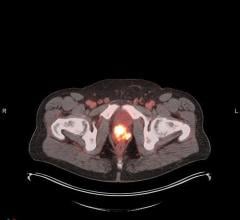
June 19, 2013 — Researchers have yet again been sent back to the drawing board in the development of the much-sought-after vaccination for smokers, which would hypothetically inhibit the action of nicotine and its pleasure-producing chemical response in the brain. One of the newest clinical studies of a proposed vaccine shows mixed results for patients after molecular imaging revealed no desirable effect and potentially allowed even more nicotine accumulation in the brain in some cases due to variations in immune response, say neuroscientists at the Society of Nuclear Medicine and Molecular Imaging’s 2013 Annual Meeting.
The objective of such a vaccine, when developers reach their goal, would be to kill the high that perpetuates people’s addiction, thereby improving the odds that they can quit smoking. “Everyone knows that smoking is bad — it causes diseases that can be fatal andM it is an expensive habit — but there are currently no drug treatments available that can help a majority of smokers achieve long-term abstinence,” said Alexey G. Mukhin, M.D., Ph.D., professor of psychiatry and behavioral science at Duke University Medical Center in Durham, N.C. “This research represents one of the first human studies of its kind using molecular imaging to test an investigational anti-nicotine immunization and how it affects the accumulation of nicotine in the brain during smoking.”
Antibodies, also called immunoglobulin, are the ground patrol of the immune system. These proteins scavenge for viruses, bacteria and foreign material. The anti-nicotine immunization introduces an antigen that induces production of antibodies that bind circulating nicotine and prevent it from crossing the blood-brain barrier to produce rewarding effects in smokers.
“In order to work, one milligram of the nicotine from smoking one cigarette needs about a half a gram of antibody for proper attachment and prevention of interaction with brain nicotinic receptors,” said Yantao Zuo, P.hD., assistant professor also in the department of psychiatry and behavioral sciences at Duke University Medical Center. “A very high number of antibodies is needed to negate the effects of nicotine from one pack of cigarettes — up to 10 percent of the 100 grams of antibodies we have available in the body. To complicate matters, not all vaccination-induced antibodies are the same. Some have high affinity to nicotine and bind strongly, while others bind with lower affinity.”
The practical result of this is that if the binding of nicotine with antibodies is weak and the nicotine-antibody bond breaks during passage of the blood through the brain, potentially more nicotine could flood brain nicotinic receptors.
“Investigational anti-nicotine vaccines like this one produce non-uniform effects,” said Mukhin. “Ideally we want it to decrease amount of nicotine that reaches the brain, but when we compared the immune response across subjects, their antibodies appeared to vary in nicotine-binding properties. Findings from positron emission tomography, otherwise known as PET, showed that strong nicotine-antibody binding, which means high affinity, was associated with a decrease in brain nicotine accumulation. When binding was not strong, an increase in brain accumulation was observed. These results are important because they tell us that we should care about not only the amount of antibody but the quality of the antibody. We don’t want to have low-affinity antibodies, because that can negate anti-nicotine effects of the vaccination.”
For this study, people who smoke more than 10 cigarettes a day were enrolled and asked to smoke during two scheduled PET brain scans. The first procedure occurred before patients were given an injection of NIC002, a novel anti-nicotine vaccine provided by Novartis and in-licensed from Cytos. Three more injections were given, and two weeks after the last dose, PET imaging was repeated. Each brain scan involved patients taking a single puff of a cigarette containing S-nicotine labeled with radioactive C-11, which can be detected by a PET scanner.
Results showed that the 10 subjects with highest vaccination-induced serum capacity to bind nicotine had high-affinity antibodies and experienced a slight but statistically significant decrease in nicotine brain accumulation. Another 10, who had intermediate serum nicotine binding capacity and low affinity of antibodies, showed the opposite — an increase in brain accumulation of nicotine. The remaining nine, with the lowest serum nicotine binding capacity, showed little change. While this was not the result researchers hoped for, it adds to a body of research that could lead one day to an effective vaccine. Most likely, such a vaccine would be developed at least five to 10 years down the road, estimated Mukhin.
“This will lead to further studies, as a variety of concepts for anti-nicotine vaccination are being developed to treat this addiction,” said Zuo. “The development of a safe and effective vaccine treatment for nicotine addiction could have a profound effect on many people’s lives in terms of overall health and disease prevention. With reports of new generations of the vaccines showing potentially much higher potencies in animal studies, we are hopeful that our current findings and methodology in human research will facilitate understanding of how these work in smokers.”
Approximately 45.3 million American adults, or just over 19 percent, are estimated to smoke. Cigarette smoking is the number one cause of preventable death in the country and is directly implicated in coronary heart disease—the leading cause of death—as well as lung cancer and other deadly lung diseases. The habit results in about 443,000 deaths, or one in five, across the United States annually. Smoking can lead to 23 times the risk of cancer for men, and 13 times the risk in women, according to the U.S. Centers for Disease Control and Prevention.
For more information: snmmi.org


 November 18, 2025
November 18, 2025 









